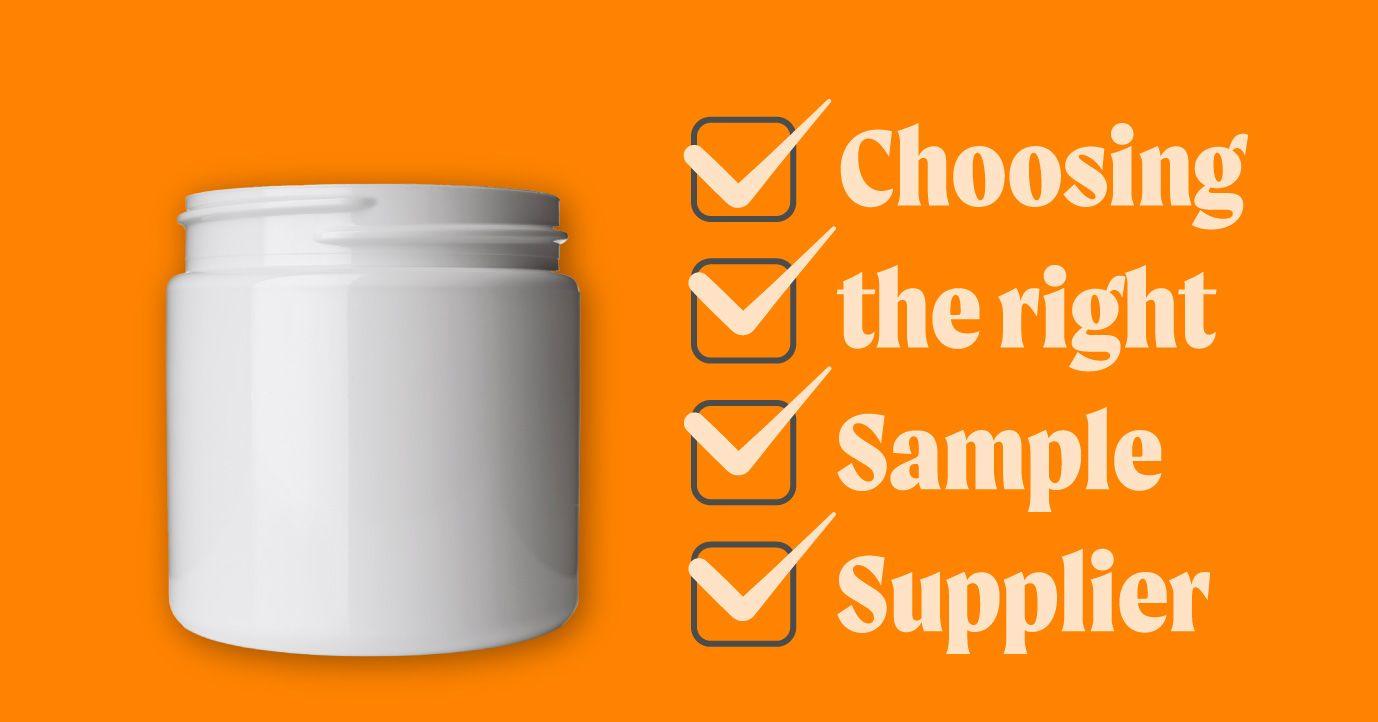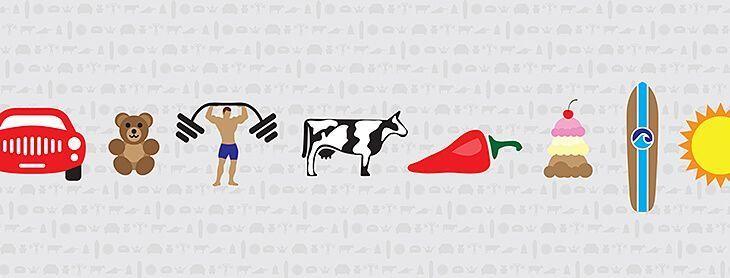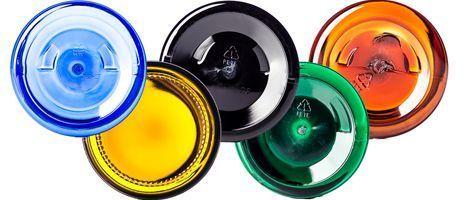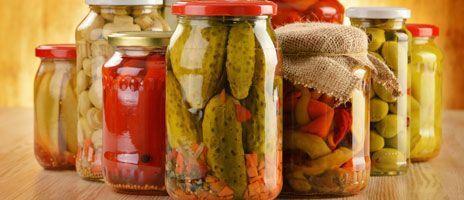Packaging Samples: Choosing the Right Packaging Supplier


Packaging Samples: Choosing the Right Packaging Supplier
Choosing the right packaging supplier is a make-or-break decision, especially when product quality and brand reputation are on the line. For many, the process feels uncertain, especially if you are ordering a custom bottle, jar, or container for the first time. Get it right, and your brand looks polished, professional, and trustworthy. Get it wrong, and suddenly you’re the proud new owner of 10,000 paper weights.
Free packaging samples (usually only paying shipping) have become a common offering among suppliers. They let you touch, test, and sometimes even torment your containers before you commit. Think of them as the dress rehearsal before opening night. Many buyers search for suppliers that provide this option to reduce risk and gain confidence in their choices.
Why Packaging Samples Save You From Costly Mistakes
On paper, a bottle looks like…well, a bottle. In practice, one wrong choice in resin or closure can turn into a six-figure disaster.
Take the food company that skipped samples and ordered 10,000 glass jars. First hot-fill run? Half of them cracked from thermal shock. That mistake alone cost them more than their entire packaging budget for the quarter. Testing samples would have exposed the problem in one afternoon.
Testing samples from multiple suppliers reveals differences that aren't obvious from online catalogs. One supplier's "8-ounce bottle" might hold 8.2 ounces while another holds 7.8 ounces. That difference matters when you're planning labels, calculating costs, or meeting regulatory requirements.
Packaging samples help you spot these issues:
- Material compatibility: Your product won't react poorly with the container
- Dimensional accuracy: Labels fit properly and volumes match expectations
- Closure performance: Caps seal correctly without over-tightening or stripping
- Visual appearance: Colors and clarity meet your brand standards
What to Check When Samples Arrive
 When the samples land on your desk, resist the urge to just nod and say “looks fine.” This is your chance to find problems while they’re still free. Here's what you should check first:
When the samples land on your desk, resist the urge to just nod and say “looks fine.” This is your chance to find problems while they’re still free. Here's what you should check first:
- Color consistency: Place samples side by side under the same lighting
- Surface quality: Run your fingers across the container to find rough spots or imperfections that could mess with labeling
- Transparency levels: Hold samples up to light to check clarity
- Overall appearance: Compare the look to your brand expectations
- Critical measurements: Use a ruler to check height, diameter, and neck dimensions
- Volume verification: Fill with water to confirm actual capacity matches specifications
- Label space: Measure available surface area for your artwork and regulatory text
And don’t forget closure compatibility: twist, tighten, and flip them upside down. If it leaks now, it’ll definitely leak in a semi-truck.
Label adhesion testing involves applying a test label to the container surface. Press it flat and smooth out any bubbles. Leave it for 24 hours, then check if it's still attached without peeling or wrinkling.
Simple Tests That Reveal Big Problems
You don’t need a white lab coat to stress-test packaging (though if you have one laying around, by all means.) For the full guide, click here! In the meantime, a few DIY methods will do the trick. These simple tests simulate real-world conditions your containers will face.
Drop testing involves dropping samples from about three feet onto a hard surface. This mimics typical warehouse and shipping handling. After dropping, inspect for cracks, dents, or breaks. Weak spots often show up immediately. If your container is glass, maybe skip this one.
Temperature cycling exposes samples to hot and cold conditions. Freeze it, thaw it, repeat. Watch for warping, cracks, or seal failures.
Chemical compatibility testing uses a small amount of your actual product or similar substance. Fill the sample container, seal it, and wait 24 to 48 hours. If the bottle swells or changes color, you’ve got a bad match.
Torque testing for caps involves tightening and loosening closures several times without working up an appetite. This reveals if caps can seal properly without stripping threads or if they stick when customers try to open them.
Comparing Multiple Suppliers Without Losing Your Mind
Testing a single sample is easy. Testing five suppliers? That’s where things get messy.
If you’re feeling ambitious and haven’t used math in a while, build a scoring matrix. Weight what matters most (quality, cost, lead time, service) and rate each supplier. Suddenly the choice is less about gut feelings and more about math (but the kind of math without letters).
If you’re part of a bigger organization:
- Production will notice if a neck finish makes filling machines cry.
- Marketing will catch if the shade of blue clashes with your brand.
- Quality control will point out that one supplier’s “8 oz” is really 7.7.
Hidden Costs That Appear After "Free"
Free packaging samples often come with a string or two attached.
Sample shipping charges are the most common add-on. Costs typically range from $7 to $25 per shipment, depending on size and destination.
Custom mold fees apply when you want packaging shapes or sizes not in the supplier's standard catalog.
Artwork setup costs cover preparation of printing plates, color matching, and digital file adjustments. This is only applicable if you’ll be using your container supplier to prep and print your labels.
Partner With Container and Packaging for Straightforward Sampling
Picking packaging shouldn’t feel like guesswork. Container and Packaging’s sample program gets the right bottles, jars, and closures into your hands fast, so you can see, test, and (if you’re feeling bold) drop-test them yourself before committing.
Got questions about material compatibility, compliance, or whether that closure is going to survive a cross-country road trip? Our team is here for that (and weirdly good at it.) And when it’s time to reorder? Everything you’ve tested and approved is saved in our system. Which means no re-measuring, no re-explaining, and no déjà vu. Which means no re-measuring, no re-expla- wait…
Check out our lineup of available bottles, jars, closures, and packaging accessories at containerandpackaging.com.
FAQs About Free Packaging Samples
Can glass and plastic container samples ship together in one request?
Most packaging suppliers can combine different material types in single sample shipments. Specify your product requirements clearly to receive the most relevant samples for comparison.
How can minimum order quantities be reduced after sample approval?
Share sales forecasts and discuss long-term partnership potential with suppliers. Ask about price breaks for shipping, logistics, and pallet pricing.
What steps resolve differences between production runs and approved samples?
Contact suppliers immediately with photos and specific details about any differences. Reputable suppliers investigate quality deviations and work to correct issues or provide replacements.




